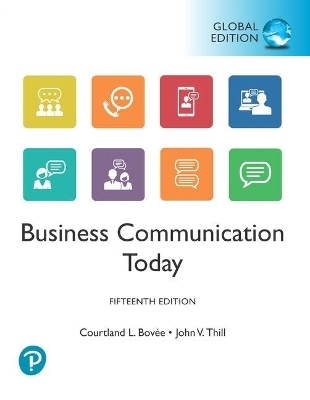
Interpersonal Communication
Kendall/Hunt Publishing Co ,U.S.
978-0-7575-9694-0 (ISBN)
- Titel z.Zt. nicht lieferbar
- Versandkostenfrei innerhalb Deutschlands
- Auch auf Rechnung
- Verfügbarkeit in der Filiale vor Ort prüfen
- Artikel merken
Interpersonal Communication: Building Rewarding Relationships reflects the countless societal, cultural, and technological changes that have influenced the ways in which we experience, discuss, and research relationships in a variety of contexts.Interpersonal Communication: Building Rewarding Relationships incorporates the historical and theoretical foundations of interpersonal communication, while introducing students to exciting and innovative research that has addressed the evolving practice of building and sustaining relationships.
Available in print and eBook formats, the second edition of Interpersonal Communication: Building Rewarding Relationships:
features a NEW chapter explaining the role that emotion plays in interpersonal relationships.
is divided into three parts: Communication Foundations and Understanding the Self, Relationship Development and Stages, and Relationship Contexts and Environments.
now includes coverage of humanity's reliance on social media to create, sustain, and even terminate relationships.
integrates Research in Real Life vignettes that connect contemporary studies to chapter content.
is interactive! Self-assessment measures help readers evaluate one's own tendencies.
Section One: Communication Foundations and Understanding the Self
Chapter 1 Interpersonal Communication: Significance and Explanation of Key Concepts
Objectives
Scenario: Sound Familiar?
Overview
Why Study Interpersonal Communication?
Significance of Interpersonal Communication (IPC) in Establishing Professional Relationships
Significance of IPC in Establishing Personal Relationships
What Exactly Is Interpersonal Communication?
Basic Principles of Interpersonal Communication
History of Interpersonal Communication
Interpersonal Communication Theory
Overview of the Textbook
Summary
Discussion Questions
Self Assessment
Key Terms and Definitions
References
Chapter 2 The Role of Interpersonal Communication in the Development of Self
Objectives
Scenario: Sound Familiar?
Overview
Importance of Studying the Process of Identity Formation
Definition of Self
Self As a Process
Self-Complexity
Self-Awareness and Communication
The Self-System
Self-Concept
Self-Esteem
Self-Regulation
Interpersonal Communication and the Development of Self
Family
Peer Relationships
Relationship Partners
Summary
Discussion Questions
Self Assessment
Key Terms and Definitions
References
Chapter 3 Why Do We Communicate the Way We Do? Personality and Emotion
Objectives
Scenario: Sound Familiar?
Overview
The Impact of Individual Differences on Social Interaction
A Comparison of Trait and State Approaches to Personality Differences
Apprehension Traits: Communication Apprehension & Willingness to Communicate
Communication Apprehension
Willingness to Communicate
Presentation Traits: Communicator Style and Humor Orientation
Communicator Style
Humor Orientation
Adaptation Traits: Affective Orientation & Interaction Involvement
Affective Orientation
Interaction Involvement
Aggressive Traits: Assertiveness, Argumentativeness & Verbal Aggression
Argumentativeness
Assertiveness
Verbal Aggression
Emotion
Emotions & Communication
Emotion Work and Emotional Intelligence
Emotions in Relational Contexts
Emotion and Health
Work and Emotion
Emotions in the Classroom
Diversity and the Expression of Emotion
Summary
Discussion Questions
Self Assessments
Key Terms and Definitions
References
Chapter 4 The Impact of Perception and Listening on Interpersonal Communication
Objectives
Scenario: Sound Familiar?
Overview
Perception and Interpersonal Communication
Limitations in Forming Perceptions
Selectivity Processes
Organization
Schemata
Interpretation
Attribution Theory
Attribution Errors
Individual Differences and Perceptions
Sex Differences
Age Differences
Cultural Differences
The Link Between Perception and Listening
Significance of Listening Skills
Hearing and Listening Defined
Step One: Hearing
Step Two: Attending
Step Three: Understanding
Step Four: Responding
Step Five: Remembering
Listening Styles
People-Oriented
Action-Oriented
Content-Oriented
Time-Oriented
Gender, Culture, and Personality Differences in Listening Styles
Gender
Culture
Personality
Common Listening Misbehaviors
Pseudo-Listening
Monopolizing
Disconfirming
Defensive Listening
Selective Listening
Ambushing
Best Practices for Effective Listening
Summary
Discussion Questions
Self Assessments
Key Terms and Definitions
References
Chapter 5 Verbal Communication: Words of Wisdom
Objectives
Scenario: Sound Familiar
Overview
Defining Verbal Communication
Rules
Symbols
Subjectivity
Context
Functions of Verbal Communication
Cognitive Function
Social Reality Function
Group Identity Function
Social Change Function
Verbal Communication Styles
Direct/Indirect
Informal/Formal
Clarity/Equivocation
Powerful/Powerless Language
Perceptions and Verbal Communication
Credibility and Status
Biased Communication and Language
Verbal Immediacy
Factors Affecting Verbal Communication
Life Span
Sex Differences in Verbal Communication
Contextual Differences
Best Practices: Avoid Verbal Pitfalls
Clarity
Appropriateness
Concreteness
Summary
Discussion Questions
Self Assessment
Key Terms and Definitions
References
Chapter 6 Nonverbal Communication: It's Not What You Said; It's How You Said It
Objectives
Scenario: Sound Familiar?
Overview
Defining Nonverbal Communication
Distinct Characteristics of Nonverbal Messages
Nonverbal Features that Are Similar to Verbal Messages
Eight Types of Nonverbal Communication
Facial Communication
Kinesics
Haptics
Proxemics
Paralanguage
Physical Appearance
Artifacts
Chronemics
Four Functions of Nonverbal Messages
Facilitate Cognitive Meaning
Encoding and Decoding Emotions
Express Affection and Support
Aid in Impression Formation/Identity Management
Best Practices: Avoid Common Nonverbal Communication Mistakes
Common Areas of Miscommunication
Nonverbal Messages and Social Influence
Practice Sending and Receiving Nonverbal Messages
Recognize Differences in Nonverbal Communication Perceptions
Future Direction for Nonverbal Communication: Electronic Paralanguage
Summary
Discussion Questions
Self Assessments
Key Terms and Definitions
References
Section Two: Relationship Development and Stages
Chapter 7 Initiating Relationships: ""Haven't We Met Somewhere Before?""
Objectives
Scenario: Sound Familiar?
Overview
The Role of Communication in Relationship Development
Relationship Defined
The Nature of Relationships
Deciding to Make the First Move: Why We Initiate Relationships
Interpersonal Attraction
Physical Attractiveness
Social Attractiveness
Task Attractiveness
Proximity
Similarity/Homophily
Interpersonal Goals
Interpersonal Communication Theories: How We Initiate Relationships
Starting the Conversation
Self-Disclosure
Social Penetration Theory
Uncertainty Reduction Theory
Predicted Outcome Value Theory
Social Exchange Theory
Stages of Relationship Development
Relationship Initiation Contexts
Relationship Initiation and Technology
Relationship Initiation and Culture
Summary
Discussion Questions
Self Assessment
Key Terms and Definitions
References
Chapter 8 Sustaining Relationships: Relationship Maintenance and Conflict Management
Objectives
Scenario: Sound Familiar?
Overview
Significance of Relationship Maintenance
Maintaining the Existence of the Relationship
Maintaining a Desired State in the Relationship
Maintaining a Satisfactory State
Routine and Strategic Relationship Maintenance
Why We Maintain Some Relationships and Not Others
How We Maintain Relationships: The Role of Communication Skills
Relationship Maintenance Strategies
Relationship Maintenance in Different Types of Relationships
Facebook and Relationship Maintenance
Conclusions about Relationship Maintenance
Conflict: A Natural Component of All Relationships
Definition of Conflict
Why Conflict Occurs
Conflict Can Be Productive or Unproductive for Individuals and for Relationships
Conflict Management Styles
Avoidance
Competitive/Distributive
Collaborative/Integrative
The Dark Side of Conflict: Verbal Aggression
Managing Conflict
Summary
Discussion Questions
Self Assessment
Key Terms and Definitions
References
Chapter 9 The Dark Side of Relationships: Deception, Embarrassment, Jealousy, Power, and Verbal Aggression
Objectives
Scenario: Sound Familiar?
Overview
Deception and Interpersonal Relationships
Why Do We Lie?
Lying to Harm Others
Lying to Protect Self
Lying to Spare Others
Detecting Deception
Analyzing Deceptive Messages
Embarrassment: Why Did I Say That?
Our Role in Embarrassment
Responding to Embarrassment
Jealousy in Interpersonal Relationships
Types of Jealousy in Relationships
Why Does Jealousy Occur?
Characteristics Associated with Jealousy and Jealousy-evoking Behavior
Gender Differences and Jealousy
Coping with Jealousy
Interpersonal Power and Verbal Aggression
Types of Power
Relationship between Power and Interpersonal Influence
Power versus Dominance in Relationships
Verbal Aggression
Verbal Aggression in Romantic Relationships
Verbal Aggression in the Classroom
Verbal Aggression in the Workplace
Summary
Discussion Questions
Self Assessment
Key Terms and Definitions
References
Chapter 10 Terminating Relationships: Knowing When to Throw in the Towel
Objectives
Scenario: Sound Familiar?
Overview
Assessing Relationship Problems: Attributions, Satisfaction, Equity
How Do You Determine if a Relationship Problem is Significant?
Investment Model: Will Your Relationship Persist or Die?
Duck's Process Model of Relationship Termination
Dyadic Process
Social Process
Grave Dressing Process
Resurrection Process
Five Stages of Relationship Dissolution
Differentiating
Circumscribing
Stagnating
Avoiding
Terminating
Strategies Used to Terminate Relationships
Positive Tone Messages
De-escalation Messages
Withdrawl
Justification Messages
Negative Identity Management Messages
Types of Relationships: Terminating Friendships
Factors Prompting Friendship Termination
Indirect Strategies for Ending Friendships
Direct Strategies for Ending Friendships
Types of Relationships: Terminating Romantic Relationships
Infidelity
Lack of Commitment
Dissimilarity
Outside Pressures
Homosexual Relationships: Factors Influencing Relationship Quality
After the Breakup: Remaining ""Just Friends""
After the Breakup: Methods of Coping
After the Breakup: Closure and Forgiveness
Summary
Discussion Questions
Self Assessment
Key Terms and Definitions
References
Section Three: Relationship Contexts and Environments
Chapter 11 Mediated Communication: Understanding the Influence of Technology on Our Personal Relationships
Objectives
Scenario: Sound Familiar?
Overview
Computer-Mediated Communication
How Do Face-to-Face and Mediated Communication Differ?
Initiating Relationships Online
Information Seeking and Uncertainty Reduction
Physical and Social Attraction
Maintaining Relationships Online
The Dark Side of Relationships Online
Terminating Relationships through the Use of Mediated Messages
Expanding the Relationship Dissolution Model to SNS
Forming Safe and Meaningful Online Relationships: An Overview
Take Your Time, Don't Rush
Pay Attention to Cues
Be Honest
Be Inquisitive: Protecting Yourself
Be Alert: Looking for Signs of Deception
Summary
Discussion Questions
Self Assessment
Key Terms and Definitions
References
Chapter 12 Intercultural Communication: Variety Is the Spice of Life
Objectives
Scenario: Sound Familiar?
Overview
Culture and Diversity Defined
Co-Cultures Within the United States
Ethnicity
Race
Regional Differences
Social Class
Characteristics of Culture
Culture Is Learned
Culture Is Dynamic
Culture Is Pervasive
The Impact of Cultural Diversity on Interpersonal Relationships
Understanding the Self
Technological Transformations
Influence of Demographic Transitions
Communication Competence: Four Core Concepts
Knowledge
Understanding
Acceptance
Skills
Personal Orientation System
Needs
Beliefs
Values
Cultural Value Orientations
Attitudes: Stereotyping and Prejudice
Communicating Prejudice
Functions of Prejudice
Suggestions for Effective Interpersonal Relationships with Diverse Others
Summary
Discussion Questions
Self Assessments
Key Terms and Definitions
References
Chapter 13 Family Communication: It's All Relative
Objectives
Sound Familiar?
Overview
Definition of Family
Types of Family Relationships
Marital Relationships
Parent-Child Relationships
Sibling Relationships
Maintenance in Sibling Relationships
Family Communication Theories
Family Systems Theory
Family Communication Patterns Theory
Symbolic Interaction Theory
Creating a Family Identity
Family Stories
Family Myths
Family Metaphors
Family Themes
Consequences of Family Relationships
Difficult Communication
Family Stress
Summary
Discussion Questions
Self Assessment
Key Terms
References
Chapter 14 Organizational Communication: Combining the Personal with the Professional
Objectives
Scenario: Sound Familiar?
Overview
The Unique Nature of Workplace Relationships
Voluntary
Temporary
Hierarchy/Status Differential
Types of Relationships at Work
Superior-Subordinate Relationships at Work
Peer Relationships at Work
Friendships in Organizations
Mentor Relationships
Romantic Relationships at Work
Interpersonal Effectiveness: Communication in Work Relationships
Organizational Culture
Stories
Language
Rituals
Socialization
Contemporary Issues in Workplace Relationships
Diversity in Organizations
Balancing Work and Family Relationships
The Impact of Technology on Work Relationships
Summary
Discussion Questions
Self Assessment
Key Terms and Definitions
References
Chapter 15 Health Communication: Using Effective Communication to Manage Stressful Interactions
Objectives
Scenario: Sound Familiar?
Overview
Overview of Stress, Stressors, and Signs of Stress
Stress and Coping
Social Support
Communication Between Physicians and Patients
Problems with Physician Communication
Patient Communication
Potential Responses to Ineffective Provider-Patient Interactions
Improving Health Care Provider-Patient Communication
Patient Communication
Health Care Provider Communication
Death and Dying Communication
Reasons for Anxiety when Discussing Death and Dying
Responses to Death and Dying
Suggestions for Improving Communication Related to Death and Dying
Effective and Ineffective Death and Dying Communication
Summary
Discussion Questions
Self Assessments
Key Terms and Definitions
References
Index
| Verlagsort | Iowa |
|---|---|
| Sprache | englisch |
| Themenwelt | Wirtschaft ► Betriebswirtschaft / Management |
| ISBN-10 | 0-7575-9694-0 / 0757596940 |
| ISBN-13 | 978-0-7575-9694-0 / 9780757596940 |
| Zustand | Neuware |
| Haben Sie eine Frage zum Produkt? |
aus dem Bereich


